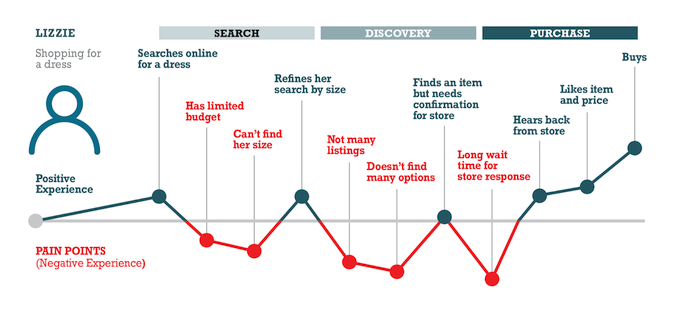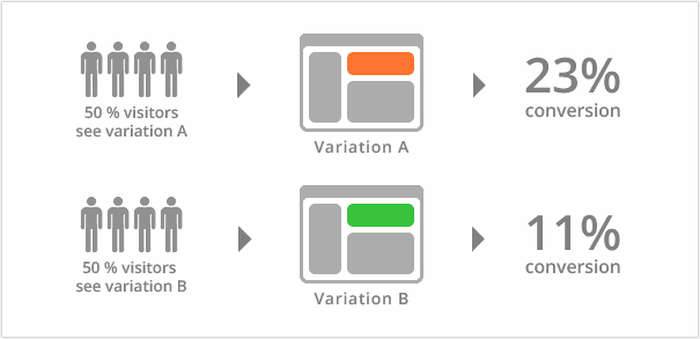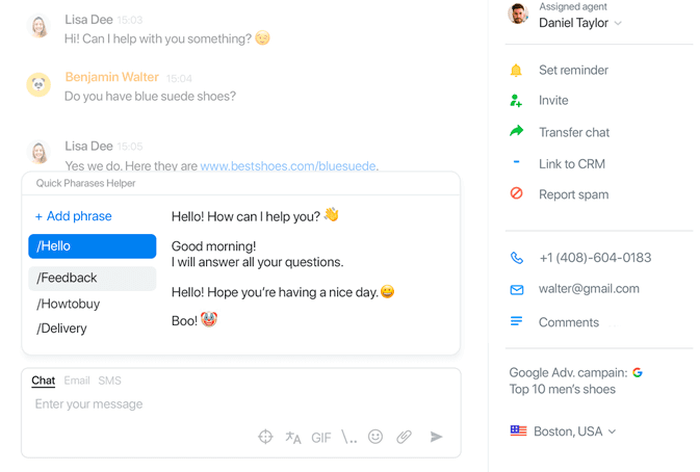To succeed in today’s competitive world, a properly mapped out customer journey is a must for every business out there, but mapping out the perfect customer journey—one with the least amount of friction—can be a real challenge. And since every store is different and not every target customer has the same behaviors, it’s easy to find yourself lost in the process and not knowing where & how to improve.
The stages of the customer journey
Table of Contents
In case you haven’t got the gist of it. we’ll go quickly over the various stages of the customer journey, and how each stage contributes to the success of your store.

Source: statusbrew
Awareness
As its name suggests, this is the stage where customers are first aware of your brand. Customers at this stage may only come across your ad by chance and don’t actively look for your products.
Popular methods of increasing awareness:
- Paid social advertising
- Influencer marketing
- Referral programs
- Freebies
Consideration
In the consideration stage, customers already know about your products and are evaluating if your products are worth it. In this stage, customers may consult various resources available like product listings, articles, videos, etc to know about your products and to narrow down their options. In short, in the Consideration stage, customers use resources available to them to define their options, or in other words, to find & put all the options on the table in preparation for the next stage – Decision.
Types of content for the Consideration stage:
- Comparison videos
- Blog post/articles
Purchase
As you might have guessed, the Purchase stage is when customers have already had their options and are now considering why they should go forward with your brand. In this stage, you’ll want to provide customers with as much relevant & positive information as possible in order to nudge them in the right direction and eventually make a sale.
Types of content for the Decision stage:
- Customer reviews
- Blog post/articles
Retention
Arguably the most important stage in the customer journey, the Retention stage is for customers who have already made a purchase and can potentially make more purchases in the near future. And since it’s more profitable to retain existing customers than it is to acquire new ones, this is a crucial stage that you need to get right.
Types of content used in the Retention stage:
- Testimonials
- Surveys
- Phone calls
- How-to videos and/or articles
Advocacy
If you’ve been doing everything correctly, some of your customers will become satisfied customers and as a result, may spread good words about your brand. And this means free word-of-mouth marketing for your brand, which is the most powerful form of marketing there is.
Types of content used in the Advocacy stage:
- Special offers
- Emails
- Social media
Customer journey optimization: best practices
To start off, you need to have a clear understanding of what you want to achieve, and some ideas on how your future customer journey might look like. There are two vital questions that you need to ask yourself:
- What is your customer journey right now?
- Which stage do you think is the one in need of addressing?
To do so, there are best practices you can apply to your business to better understand your customer journey:
Track customer activity
Customer activity tracking is the one thing that makes or breaks every data-driven customer journey out there. And when you do track it, there are important metrics that you need to pay attention to such as:
- Devices: how many percentages of your customers use your mobile website/app? If your mobile customers are in the majority, it might be worth it for your business to invest in mobile commerce.
- Use engagement: What’s your percentage of returning customers? If the rate is too low, maybe you’ll need to investigate what’s keeping your customers from coming back
- Average order value: Knowing your average order value can help you better align your strategies and keep
Locate the important touch-points & pain points
Customers interact with your brand throughout various channels, and there are important touchpoints (the points of interactions that customers have with your brand) that you need to address. When customers open an email containing your hot deals, that’s a touch-point; and if your emails fail to make customers check out your promotional offers, that’s a pain point in need of addressing.

Example of a simple customer journey map
Image source: Prototypr.io
For customers like Lizzie, failing to offer listings and options that she wants can be the pain points of your business, and Lizzie certainly won’t be the only customer facing these issues. Improving your pain points can work to make the Lizzies of your business have more incentive to convert, and essentially means better revenue for your business in the long run.
Utilize personalization
Personalization is no longer a nice-to-have any more, as it is now a vital part of the shopping experience. With personalization, you make the shopping experience about your customers and them only. And this means making every customer touchpoint personalized in order to produce a customer-centric shopping experience. There are various ways you can achieve this, but here are some ideas on where to start:
- Buyer persona: First and foremost, you need to find the buyer persona of your business. Only by identifying the buyer persona of your target customers, you can move on to the next step that is segmentation.
- Segmentation: after defining the buyer persona, you can then work on the next step that is to use data-driven methods to segment customers into different groups, and then from the segmented groups you can serve target content such as personalized emails, product recommendations, etc

Source: SnoviLabs
Use MVT and A/B tests
MVT (multivariate testing) and A/B tests (split tests) help you develop a better understanding of your campaigns. Basically, these two methods utilize the same core mechanism that is to use multiple variables to reveal information about a given subject. If you’re just getting started on data analysis, the A/B test should be your method of choice due to its simplicity.

A/B test shows that Variation A results in a better conversion rate
Image source: Crazyegg
With A/B tests, you expose a set of groups to two variants (A & B). The responses gathered from these groups will then be the results of your experiment. Sounds simple enough?
It’s thanks to this simplicity that we see A/B tests utilized almost everywhere. You can use A/B tests to determine the effectiveness of a CTA button, a design change, or even something small like the removal of breadcrumbs in your checkout page—but remember, both of your testing groups must be equal.
Automate your operations
Why waste time repeating the same task over and over again when you can automate the vital parts of your business? There are areas in your business operations where you can start automating now and enjoy the benefits that come with it. Some of the most prominent ones that come to mind are:
Purchase order automation
There must be cases when your inventory is out of stock and in need of replenishment. You then contact your supplier(s) to order inventory and make further arrangements. The purchase orders involved in this process are often manually made, which is a waste of time when you really think about it. With automation, you can set a threshold for your inventory and, upon reaching which, the system will automatically make purchase orders for more stock, thus reducing the time and effort required to manage your business.
Customer support automation
You would think the customer support department is the one where the human touch is required the most—and this is partly true. But on a larger scale, when you have to deal with thousands of calls, messages, emails per day, automation is without a doubt required in some part of the customer support. RMA processes, ticket routing, feedback gathering, etc are all areas that can be automated, and the big brands are all doing it.

Chatbots can help answer frequently asked questions
Conclusion
A properly mapped out eCommerce customer journey is without a doubt the key to your eCommerce success. Hopefully, with the best practices provided in the article, you can work on optimizing your customer journey and gather the best results for your business.
